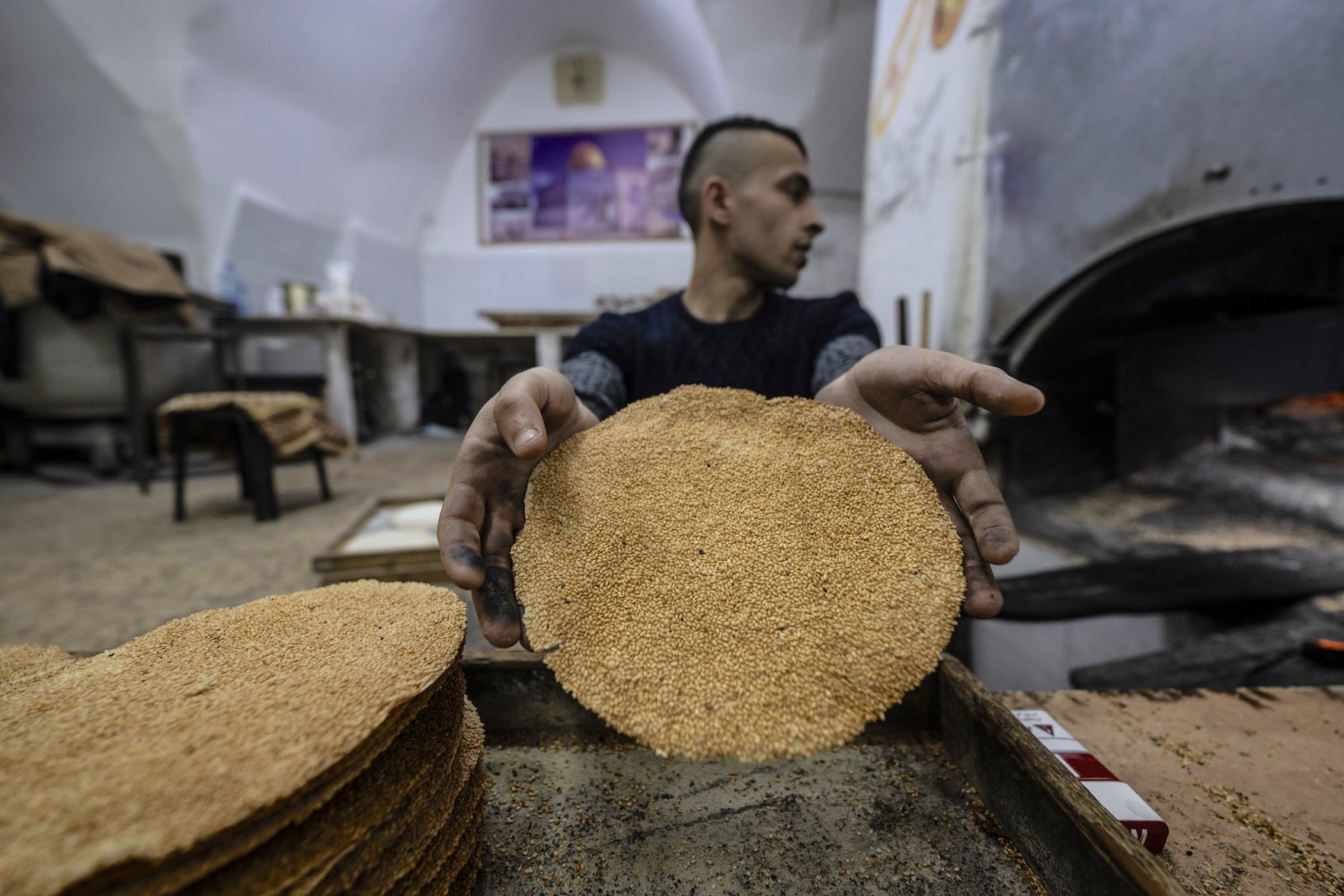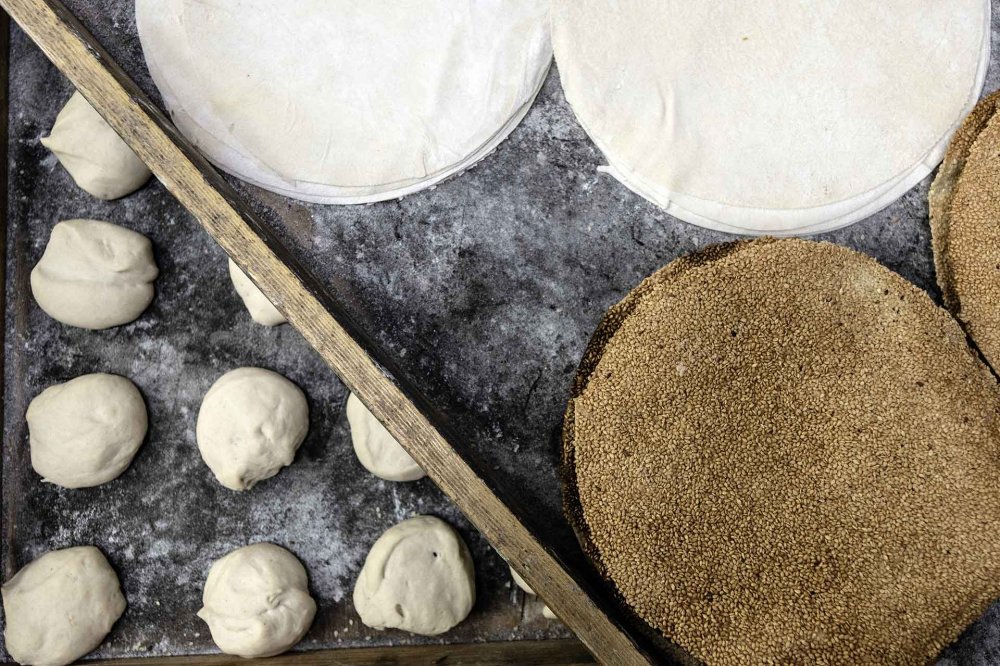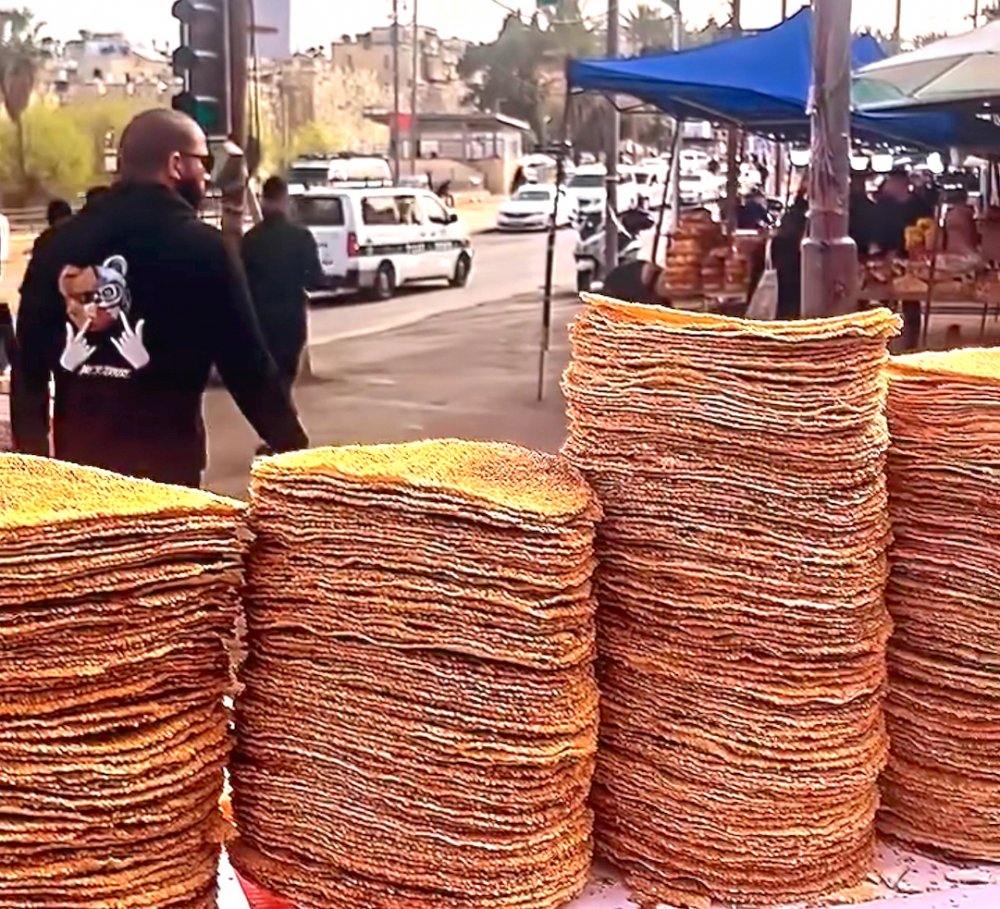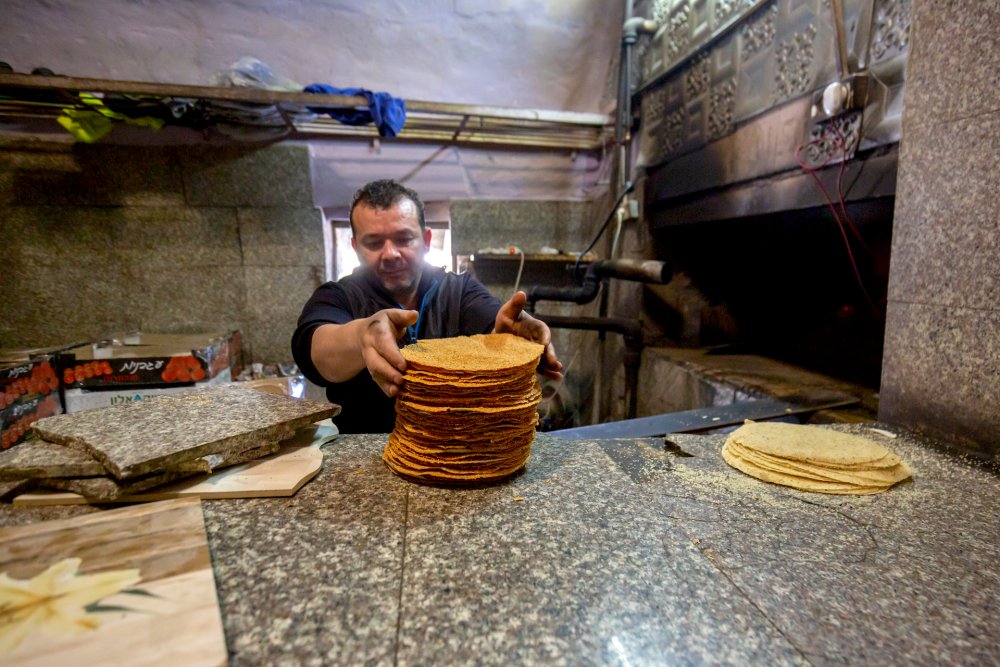During Ramadan, Jerusalemites wouldn’t think of going home after the afternoon prayer or even after the tarawih prayer in al-Aqsa Mosque without carrying a bag of Jerusalem barazeq. This wonderful savory treat has become one of the most important landmarks of Palestinian East Jerusalem, on a par with ka‘ek sesame bread, the ancient city wall, and the Old City itself.
The fragile and crunchy savory covered with toasted sesame is baked in an old firewood oven in the Old City and carries the fragrance of the oven. It requires extraordinary skill to handle the precise specifications required to make barazeq, and the uniqueness of this delicacy and its association with Ramadan and the Old City of Jerusalem carries with it the blessing of the holy month. Few people walk out of the Old City without buying barazeq, because they know that people at home are waiting for it.
So what is barazeq, anyway?
Dr. Ali Qleibo, a sociologist who has written several books on Jerusalem and its social history, is clearly a fan of barazeq (and other Ramadan treats) and waxes poetic when asked about it: “A harmonious set of smells and tastes comes to mind in Ramadan, including qatayef and barazeq.”1 Days before the month of Ramadan begins, kiosks for making qatayef pop up; on store shelves, displays of walnut boxes and sweet cheese items tempt shoppers. At that time, barazeq replaces Jerusalem ka‘ek in Jerusalem ovens. (Ka‘ek is available to Jerusalemites all year around; not so, barazeq.)
Al-Razem bakery in the Old City’s al-Sa‘diyya neighborhood is the most prominent bakery that specializes in barazeq, and its firewood gives the delicacy a special flavor and taste. The bakery has been in the family for generations. (It is also known for its ka‘ek.)




